Making your own baby food: A Crash Course
by Jessica Eliason, DC

Even the simplest chores can feel so daunting with a newborn, and the thought of making your own baby food may be overwhelming! But it’s really so easy. I have made all of Ewan’s food thus far, and the peace of mind of knowing exactly what he’s eating (and not eating—looking at you, sugar, preservatives and artificial colors and flavors!) is invaluable. We have enough things to worry about as parents, and baby food quality shouldn’t be one of them!
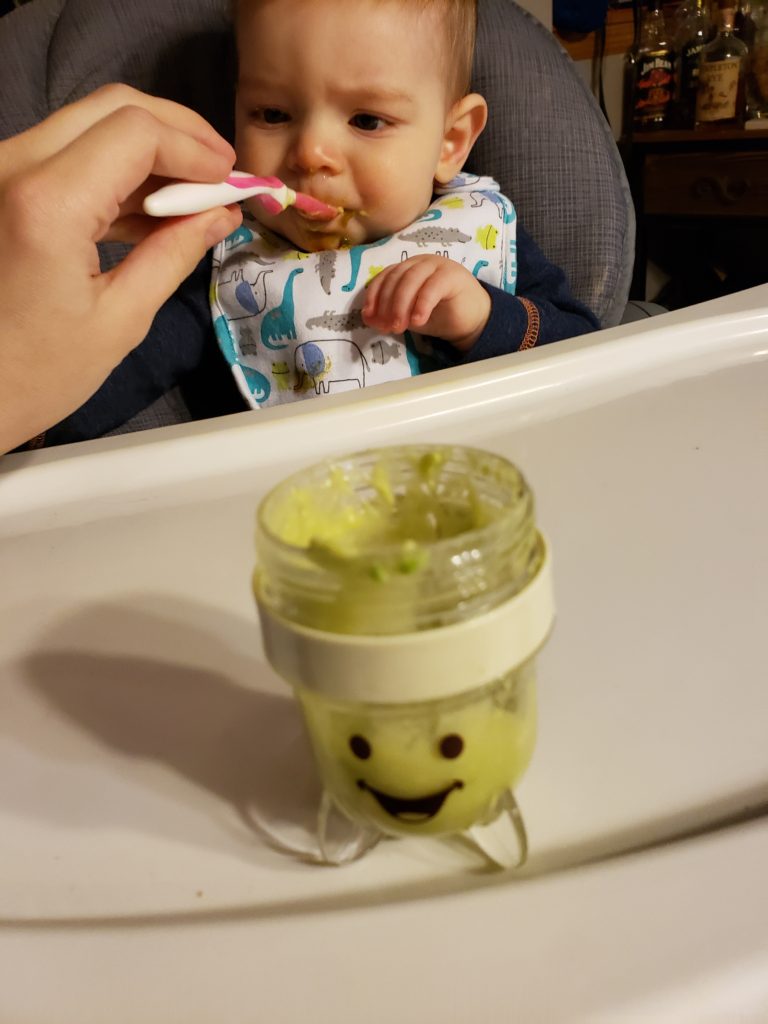
There are approximately a million different opinions on what foods to start your baby on, how much to give them, and in what form. Since I personally have a lot of food sensitivities, I decided to only introduce a new food once every four days, so I could gauge Ewan for any reactions. It was really nice to have a good store of small portion sizes built up for him!
We’ll go over some of the basic first foods to give your baby. I’ll talk about how I prepared them, why we chose them, and how they went over. From there on out, it’s pretty easy to extrapolate these patterns to similar fruits and veggies.
In this article: sweet potatoes, winter squash, applesauce, pears, plums, peaches/nectarines, peas, green beans, cauliflower, and avocado
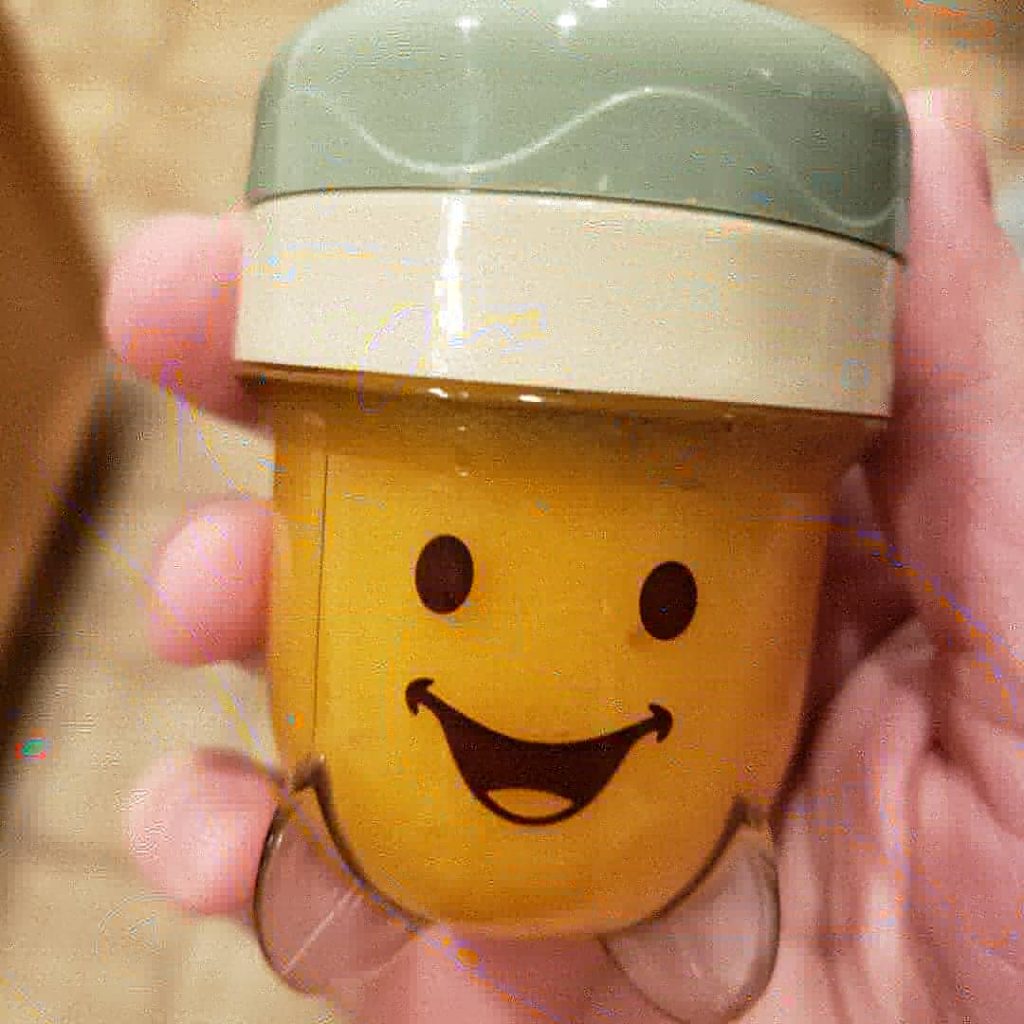
I used the Baby Bullet system, and it was honestly a great thing to have on my registry! I would highly recommend it. I have the turbo steamer and the blender sets. They come with great silicone freezer molds, which are about 2 oz of food apiece. You can just as easily use ice cube trays, and the servings will be about 1 oz of food per cube.
You’ll need a blender, ice cube trays, a baking sheet, and freezer storage bags (I just use gallon sized ones). It’s also helpful if you have a steamer basket and a crockpot.
Here we go! 10 easy first purees to make your baby.
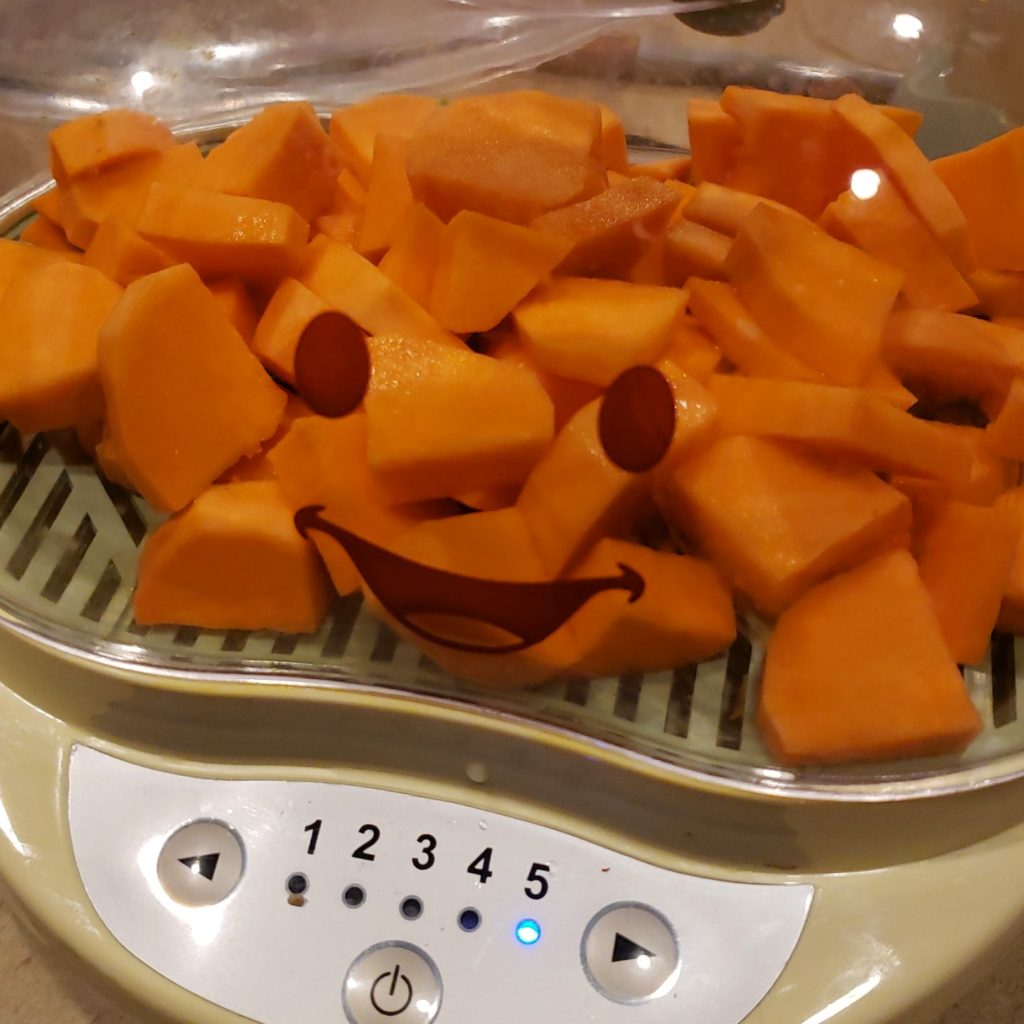
1. Sweet Potato and winter squash are super easy. Bake sweet potatoes at 425 degrees for about 45 minutes, let them cool, then skin them. Blend with enough water to make an applesauce-like consistency (if this is baby’s first food). Then, pop into ice cube trays! There is a large variation in size, but one sweet potato will usually yield about 3-5 oz/cubes of baby food. I’d make 3-4 sweet potatoes at a time to start your stash. My son didn’t react very well to sweet potato as the starchiness is constipating for him. If this is a concern for your baby, consider holding off on them another month or two, or thinning with breast milk instead of water the first couple of times baby has them. Sweet potatoes can also be cubed and steamed.
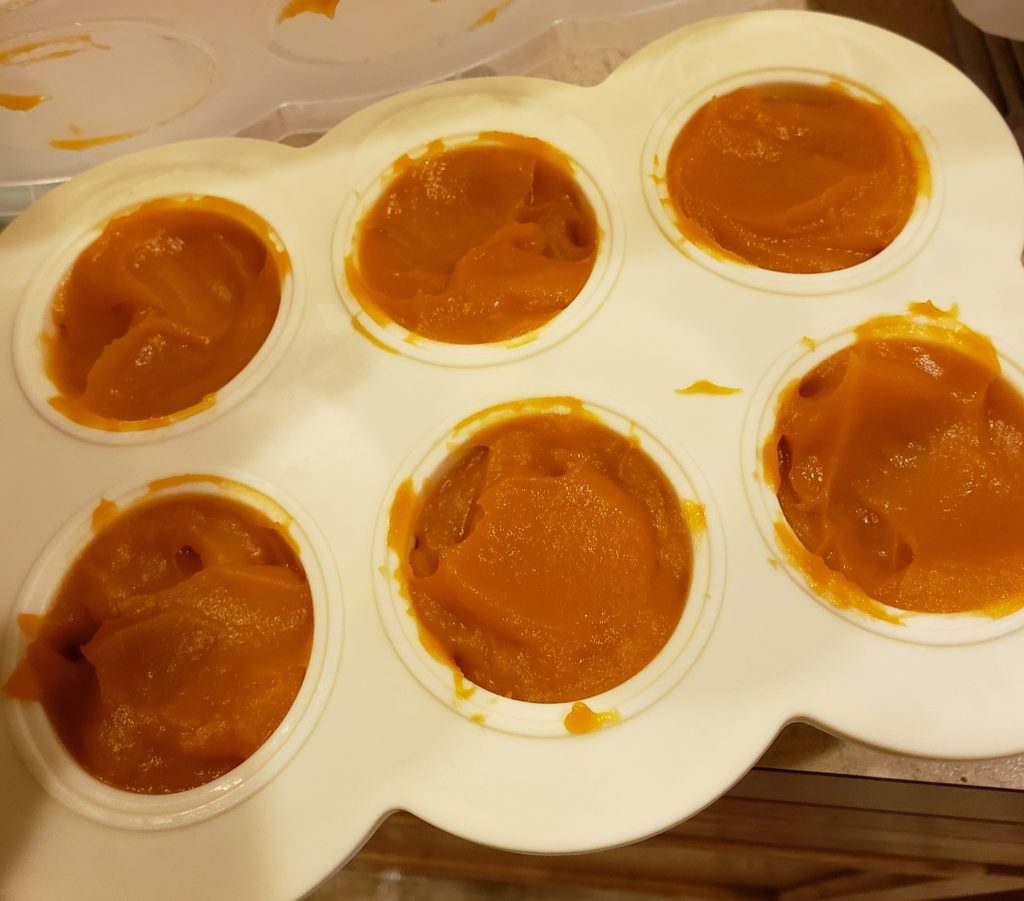 2. For Winter Squashes like acorn or butternut, bake at 350 degrees for about an hour and a half, then just scoop the flesh out and pop it in the trays. I usually wait to water this down until closer to serving time. Winter squashes are great because you get a huge yield! I think two buttercup squashes gave me 3 full ice cube trays of baby food, and it freezes so well.
2. For Winter Squashes like acorn or butternut, bake at 350 degrees for about an hour and a half, then just scoop the flesh out and pop it in the trays. I usually wait to water this down until closer to serving time. Winter squashes are great because you get a huge yield! I think two buttercup squashes gave me 3 full ice cube trays of baby food, and it freezes so well.
3. Who doesn’t love crockpot applesauce? Your baby definitely will! Peel a few apples (the skin can be tough for new eaters to digest), cube them up (about 1 cm cubes), and toss them in a crockpot set to high for 2-3 hours or low 4-6. Try not to eat it all yourself! Don’t add any extra goodies like cinnamon or honey (ESPECIALLY NOT HONEY!) this early on; the taste of apple will be new and exciting enough for your baby. Toss the softened apple cubes into a blender with a little water (just a tablespoon or two), then pop the sauce into your ice cube trays. Easy!
Apple mixes well with almost any other produce; my son likes it with plums.
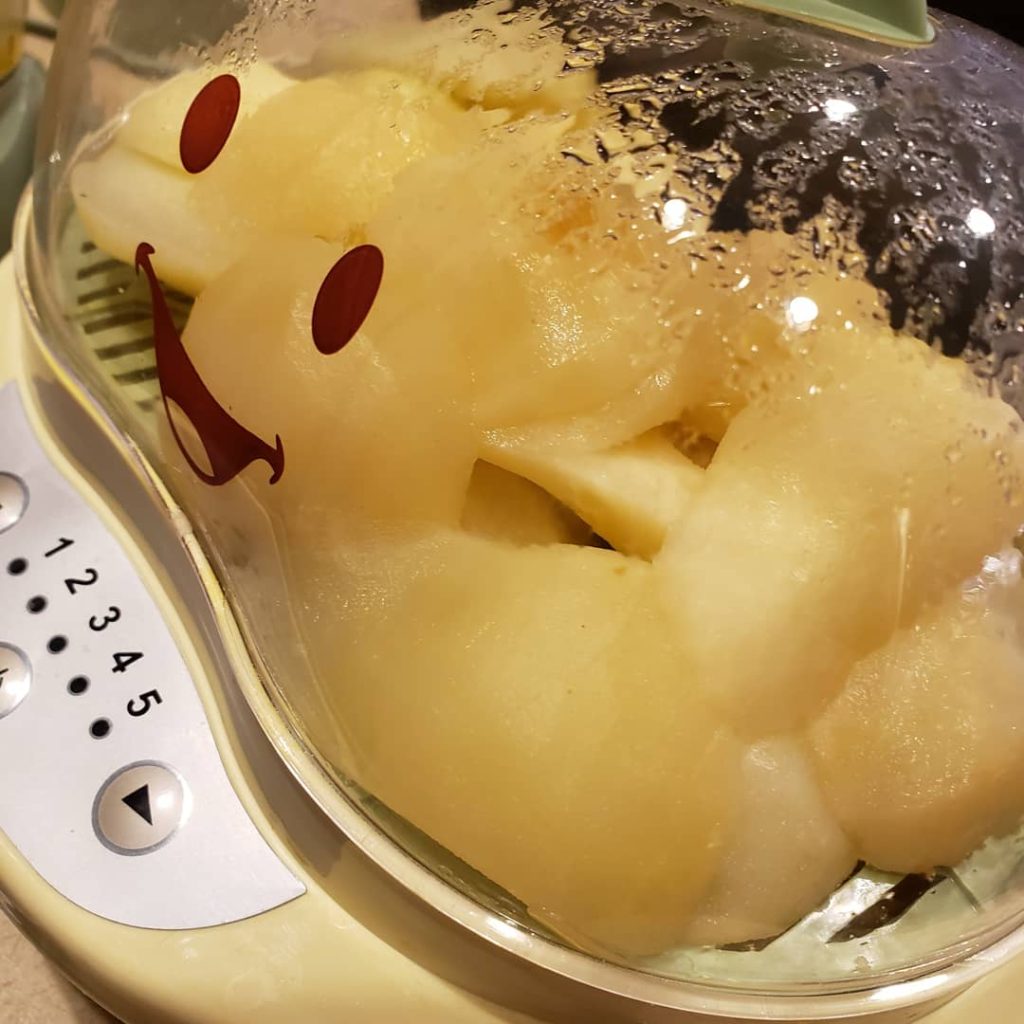
4. You can do pears in the crockpot also, but they are so soft and juicy that I just lightly steamed them before blending them. Ewan absolutely loves pears, and they are so incredibly easy on those little tummies. Peel them first, steam for about 5 min, or follow the crockpot directions for applesauce above. You probably won’t need much, if any extra water for blending pears; like I said above, they tend to be juicier. They are great for helping with constipation.
***Apples and pears usually yield about 4 ounces apiece, but there is a huge variation in size so no promises. These are so versatile that a little extra never hurts!
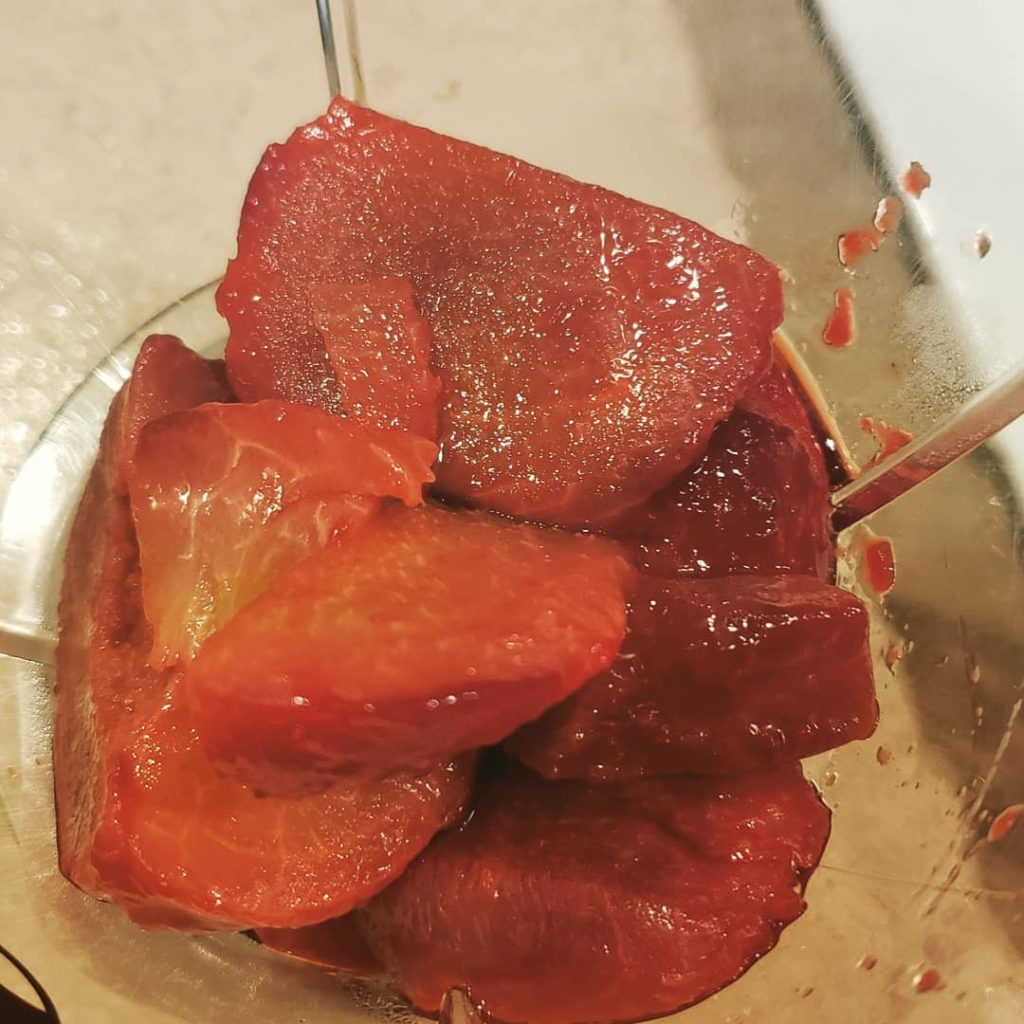 5. Plums are wonderful for babies, especially for their little bums! If your baby struggles with constipation, a few days of pear-plum food will loosen those stools right up. I pit and cut plums into quarters, and steam them for about 10 minutes. You don’t even have to skin them first because, after steaming, it will peel right off. If it’s a little sticky, just use a paring knife to slip it off. Let them cool, blend them with a little water, and freeze. The last time I made plums I made 5 and got about 20 oz of food. It’s not an exact science. Don’t overthink it too much.
5. Plums are wonderful for babies, especially for their little bums! If your baby struggles with constipation, a few days of pear-plum food will loosen those stools right up. I pit and cut plums into quarters, and steam them for about 10 minutes. You don’t even have to skin them first because, after steaming, it will peel right off. If it’s a little sticky, just use a paring knife to slip it off. Let them cool, blend them with a little water, and freeze. The last time I made plums I made 5 and got about 20 oz of food. It’s not an exact science. Don’t overthink it too much.
6. I found the skin of peaches and nectarines to be a little tougher, so I did peel those first, cut them into wedges, and steamed for about 10 minutes. You know what was much easier than that? Buying a bag of frozen peaches! Thaw them, steam them up or stew them until soft, blend with a little water, and freeze! Much easier. You can refreeze them as long as they have been cooked.
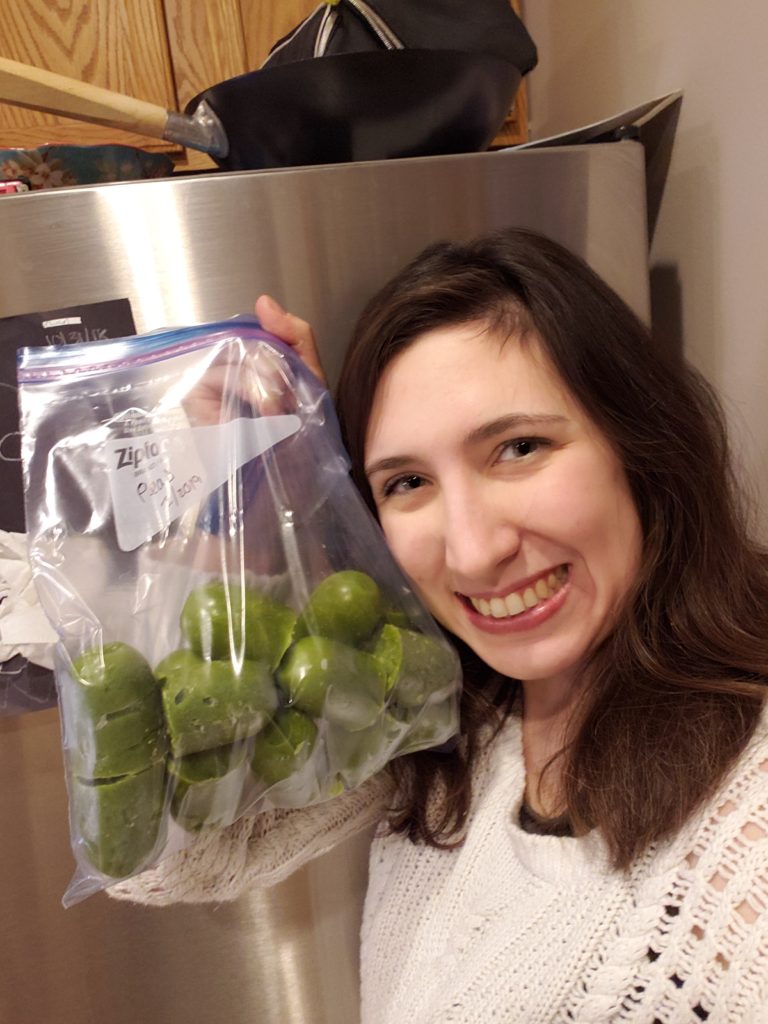 7. Peas are another great veggie to buy frozen! If you don’t want to microwave, just throw them in a pan with a little water, bring the water to a boil, and heat them through. Then, puree with a little water (to applesauce consistency) and freeze! Peas are loaded with fiber and B vitamins, and are ideal first food as they are a sweeter veggie. Ewan loves them, and they pair well with other veggies. A bag of peas gave me about 12 oz of baby food. Again, as long as they have been cooked, they can be refrozen.
7. Peas are another great veggie to buy frozen! If you don’t want to microwave, just throw them in a pan with a little water, bring the water to a boil, and heat them through. Then, puree with a little water (to applesauce consistency) and freeze! Peas are loaded with fiber and B vitamins, and are ideal first food as they are a sweeter veggie. Ewan loves them, and they pair well with other veggies. A bag of peas gave me about 12 oz of baby food. Again, as long as they have been cooked, they can be refrozen.
8. You can buy green beans frozen, also, but fresh ones steam up so nicely! A bag gives 12-20 oz (it depends on how much you have to trim off). They take a little longer to blend up as they are fibrous, but be persistent with them—all that fiber will help baby’s bowel movements. I recall having to add quite a bit of water to get them to that saucy consistency. Ewan doesn’t really like green beans by themselves, so I usually mix them with cauliflower or peas.
9. Which brings us to cauliflower! Mmm mmm, this is Ewan’s favorite veggie. It gets so nice and creamy when blended up. Steam the whole head in a pot with water, pop the florets off to cool, and blend! You won’t need much water after steaming it. Cauliflower, like most cruciferous veggies, can make baby a little gassy. If gas is a concern for your baby, pair the cauliflower with a higher fiber veggie like peas or green beans, or with some squash. Ewan’s ideal meal would be a couple of ounces of cauliflower with some pears for dessert. One head of cauliflower usually gives me about 24 oz of food, which makes it another good bang-for-your-buck veggie.
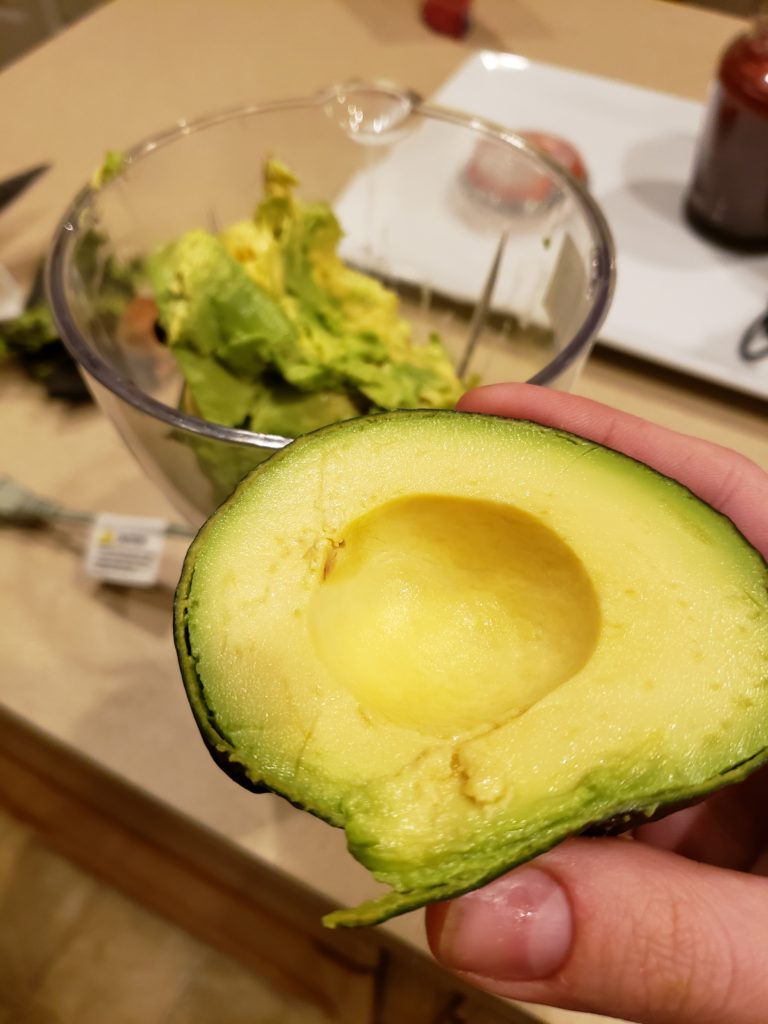 10. Who doesn’t love a delicious, ripe avocado?! Like cauliflower, it purees into a great, creamy consistency. All that healthy fat is so good for your baby’s brain, and will keep them fuller longer. Pick avocados that are ripe (they give slightly to touch), but not brown. A lot of people don’t know that you can freeze avocado! It’s not recommended to freeze slices, but that’s just fine with us because mashed and pureed avocado freezes great! It can brown a little upon thawing. You can avoid this by wrapping the cube in a little plastic wrap to limit air exposure while it thaws, but that small bit of oxidation won’t hurt baby. Yield from avocado is similar to pears, but there is great variation in size. I’d start with 4-5 and see where you get.
10. Who doesn’t love a delicious, ripe avocado?! Like cauliflower, it purees into a great, creamy consistency. All that healthy fat is so good for your baby’s brain, and will keep them fuller longer. Pick avocados that are ripe (they give slightly to touch), but not brown. A lot of people don’t know that you can freeze avocado! It’s not recommended to freeze slices, but that’s just fine with us because mashed and pureed avocado freezes great! It can brown a little upon thawing. You can avoid this by wrapping the cube in a little plastic wrap to limit air exposure while it thaws, but that small bit of oxidation won’t hurt baby. Yield from avocado is similar to pears, but there is great variation in size. I’d start with 4-5 and see where you get.
There you have it! 10 great first foods for baby to get your freezer stash started. You can feel good about them because you know exactly what’s in them. Try to buy organic if you can, especially for the foods that aren’t peeled (cauliflower, green beans).
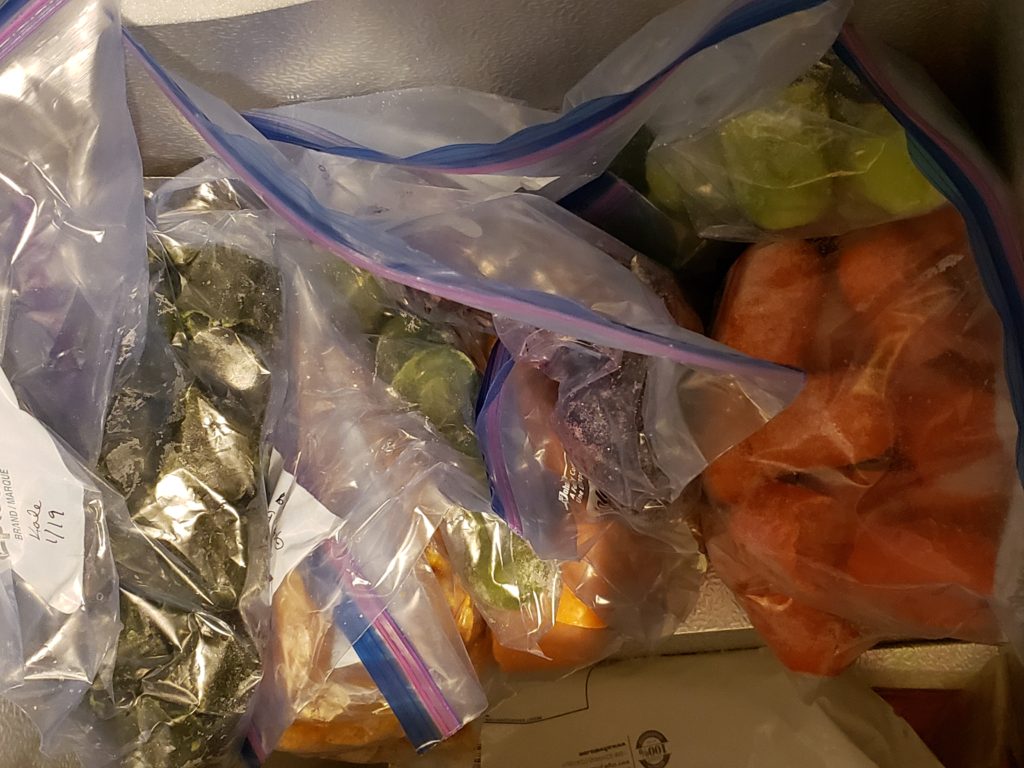 For storage, make sure to date your freezer bags with the month/year the food was made. Try to squeeze all the air out of the bag before sealing. Refrigerator-frozen food should be consumed within 3 months, ideally within one. We have a small deep freezer chest in our garage– if storing there, the food should be good for 6 months to a year. I usually pop out what I need the night before and let it thaw in the refrigerator, and gently warm it in some warm water when Ewan is ready to eat. I built my initial store, and now I pick a food or two every weekend to make to keep my supply up (for example, I’ll pick up a few pears or a bag of peas).
For storage, make sure to date your freezer bags with the month/year the food was made. Try to squeeze all the air out of the bag before sealing. Refrigerator-frozen food should be consumed within 3 months, ideally within one. We have a small deep freezer chest in our garage– if storing there, the food should be good for 6 months to a year. I usually pop out what I need the night before and let it thaw in the refrigerator, and gently warm it in some warm water when Ewan is ready to eat. I built my initial store, and now I pick a food or two every weekend to make to keep my supply up (for example, I’ll pick up a few pears or a bag of peas).
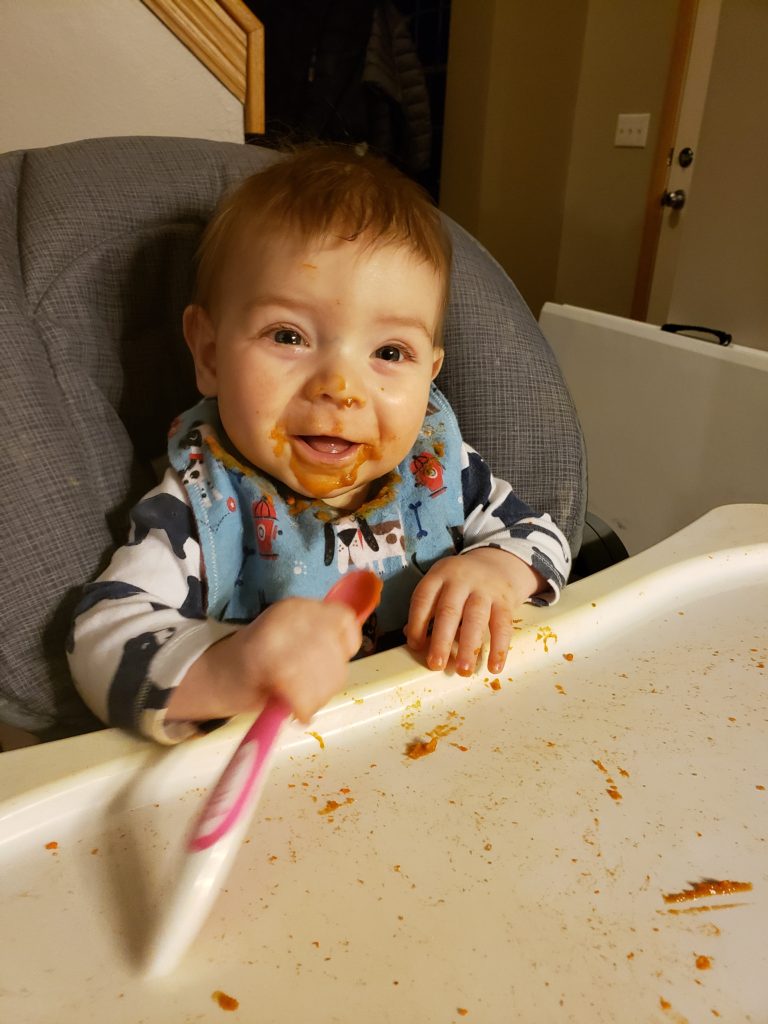
Happy Blending! Your sweet baby will thank you!
Read more about Dr. Eliason’s pregnancy here!
Peace and delicious food,
Jessica Eliason, DC, and Ewan
